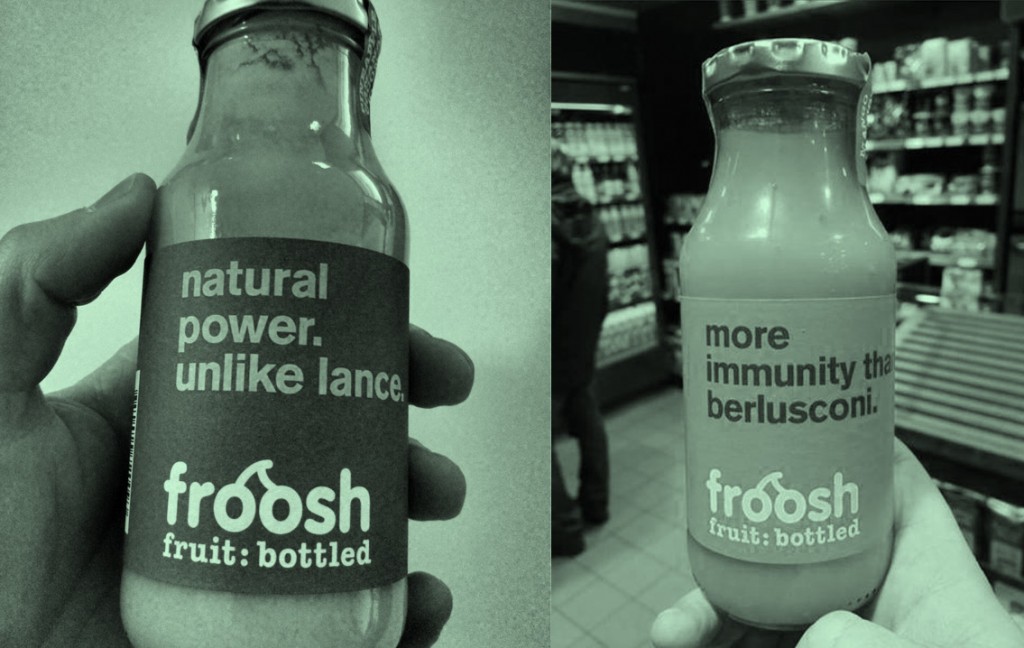Molly wrote this for the Marketing Society…
Most people can’t write about tone of voice without mentioning its patron saint, Innocent. (There we go, job done in the first sentence.) But Innocent’s been around for over fifteen years and grown from start-up to Coke’s not-so-little sister. It hasn’t been the new kid for a long while, yet it’s still pretty much the only tone of voice pin-up around. So where are the rest?
It’s not that brands don’t bother with tone of voice, many of them do. But the tone of voice projects that go on behind the scenes often stay there – gathering dust in a graveyard of guidelines, never to be read again. Or big brands concentrate on spring-cleaning their formal words, swapping them for simple and clear, or ‘plain’ (what a shame). It’s no mean feat and takes time to change, say, a huge bank’s letters and emails, but it’s pretty much the basics as far as the tone goes. It also does tone of voice a disservice because there are all kinds of styles and tones to work with, but somehow it’s become a multiple choice: formal, clear, or Innocent wannabe.
Innocent’s tone of voice became a victim of its own success. Soon, other brands tried to do the same, but made the mistake of trying to copy Innocent (who do what they do really well, and it’s hard). So up popped lots of matey-matey poor imitations from Barclays to water companies to crisps… They didn’t give two hoots whether the tone was right for their brand or not – or if the writing was actually any good. Barclay’s famously renamed (and tried to trademark) their cash machines as ‘Hole in the Wall’ in 2006 and wrote “Through these doors walk the nicest people in the world” outside their banks. They quietly scrubbed all traces of these words post-2008 when they seemed even more out of tune with the public mood. They, like a lot of brands, had decided once Innocent had done it, they wanted to do it too, whether it felt right or not.
“We’ll have what they’ve got” is a problem we come across a lot in branding. When they’re looking around for inspiration, a lot of companies don’t want to be the first to go for it. They’ll check out the competitive set and end up with something very similar. It’s what I call ‘mood-board syndrome’: here are some pictures that are vaguely the same, and we’ll end up with something vaguely the same. Which is why a lot of the more playful tones post-Innocent started popping up on food and drink cartons. And it’s still going on.

Again, it’s more fruit juice. Once one brand’s given others permission, they’re happier to go for it. It’s safety in numbers (or words).
But when a brand uses words well and sticks its neck out from the rest, people notice. Take this ad from Danish bank, Nordnet:
The words aren’t cutesy, they’re pretty straight. It’s the idea behind it that does all the work: they’ve thought about what it means to be a transparent bank, they haven’t merely said that in the plainest way. NatWest and RBS could learn a lot here. Their current campaign about fairer banking would stick in the public’s psyche and be much harder to copy if they pitched it more laterally.
And that’s a case in point. So much of tone of voice is not just about writing. It’s about the ideas behind the words. Once you’ve cracked that, the writing part is easy (trust me). I think brands need to approach tone of voice in a slightly different way. Forget peer pressure and what everyone else is up to. What’s right for your brand? What can you do to stand up and stand out? How can your tone really help customers notice you? And don’t be afraid to be the first. It’s lonely at the top. Innocent could do with some company.
Liked that? Read our tone of voice how-to guide.
